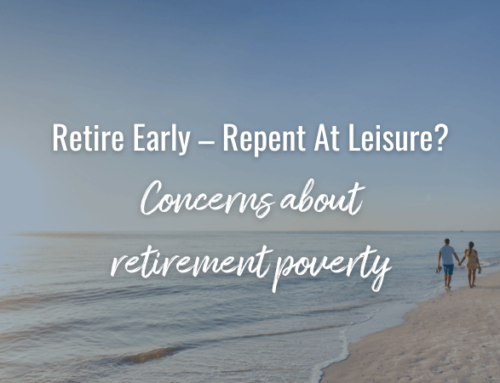The new pension laws and rules which apply to defined contribution pensions can seem quite complex and there’s a lot of information to take in. Below we look at some of the more frequently asked questions.
DO I HAVE TO RETIRE TO ACCESS MY DEFINED BENEFIT CONTRIBUTION PENSION?
No. There’s no need to wait until the state retirement age. As long as you’re over 55 you can access your pension. It doesn’t matter whether you’re still in work, about to retire or already retired.
WHAT’S TO STOP ME WITHDRAWING MY ENTIRE PENSION POT AT AGE 55?
Whilst it’s true that you can from age 55 take up to a quarter of your defined contribution pension as a tax-free lump sum, withdrawals over and above this figure are taxable. They will be added to the rest of your income in that tax year, and so you could find yourself pushed into a higher tax bracket.
It’s also important to bear in mind that pensions shelter your savings from income tax and capital gains tax until you take that money out, and it makes sense to keep this tax-efficient status going for as long as possible.
Remember too that life expectancy is rising and you could spend 30 years or more in retirement. You’ll want your retirement income to last as long as you do.
WHAT IS FLEXIBLE ACCESS DRAWDOWN?
Flexi-access drawdown or pension income withdrawal is a way of taking an income from the money you have built up in your pension while still keeping it invested. As the remainder of your pension fund remains invested, you still have the potential for the fund to grow free of income and capital gains tax.
You have the flexibility to take money as and when you need it – you can choose to take up to 25% of your pension pot as a tax-free lump sum or gradually over time taking a quarter tax-free each time. You then move the rest into a fund or funds to allow you to take an income at times to suit you.
WHAT IS THE DIFFERENCE BETWEEN DRAWDOWN AND AN UFPLS?
An UFPLS is an Uncrystallised Funds Pension Lump Sum, and is a one-off lump sum taken from an ‘uncrystallised’ defined contribution pension pot. In this case, ‘uncrystallised’ means the benefits have yet to be accessed. The amount of the pot deemed ‘crystallised’ depends on how much of the tax-free lump sum has been taken. On the face of it, UFPLS are similar to drawdown, but you can’t take 25% of the fund and leave the rest of the fund invested; for that to happen you’d need to go the drawdown route.
Under an UFPLS, 25% of each pay-out is tax-free, and each individual withdrawal is crystallised against the lifetime allowance (LTA). If you reach that threshold, you would have to pay tax on the amount over and above the LTA, initially at emergency rate, whereas with drawdown, the act of making a fund available for drawdown crystallises the whole pot from the outset.
Taking an UFPLS will trigger the money purchase annual allowance, which would reduce the amount you could contribute to your pension from £40,000 to £10,000. As ever, taking advice is absolutely essential to help ensure you select the most suitable option for your individual needs and circumstances.
IS MY PENSION FUND TAXABLE WHEN I DIE?
Any money left in your pension fund at your death can be passed on. This will be free of tax if you die before age 75 and the funds are paid out within a two year window. If you die at 75 or over, the person you name as your beneficiary will pay income tax on what they receive.
It is important to take professional advice before making any decision relating to your personal finances. Information within this newsletter is based on our current understanding of taxation and can be subject to change in future. It does not provide individual tailored investment advice and is for guidance only. Some rules may vary in different parts of the UK; please ask for details.
We cannot assume legal liability for any errors or omissions it might contain. Levels and bases of, and reliefs from taxation, are those currently applicable or proposed and are subject to change; their value depends on the individual circumstances of the investor.
RISK WARNING
The value of investments can go down as well as up and you may not get back the full amount you invested. The past is not a guide to future performance and past performance may not necessarily be repeated. If you withdraw from an investment in the early years, you may not get back the full amount you invested.
Changes in the rates of exchange may have an adverse effect on the value or price of an investment in sterling terms if it is denominated in a foreign currency.
If you’re still unclear about the new pension laws and rules, please feel free to contact us for a chat, or an initial pension review. Clifford Osborne are independent financial advisors serving clients across East Sussex, including Eastbourne, Uckfield, Lewes, Crowborough, Hastings, Seaford, Newhaven, Brighton, Hove and Tunbridge Wells. Recommendations have led to gaining clients well beyond Sussex too.






